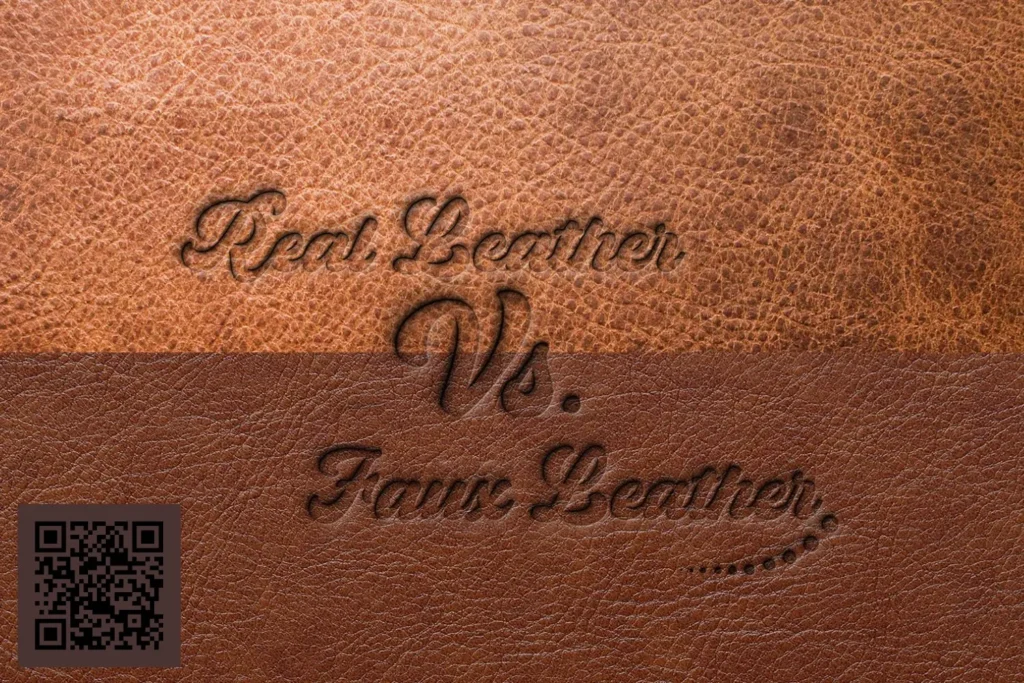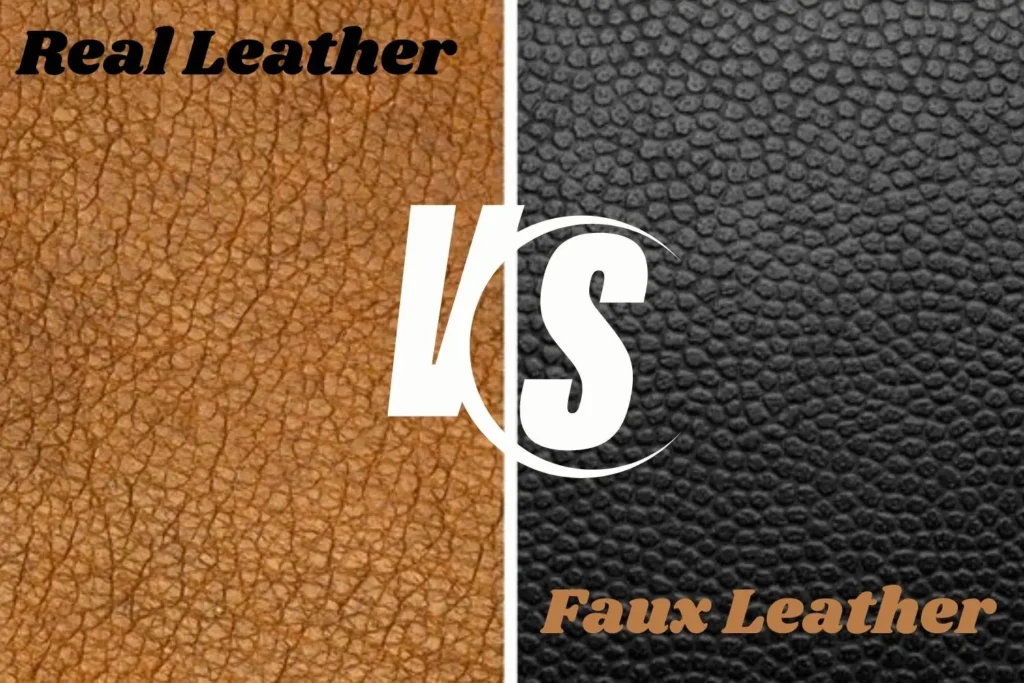Which one do you go for; real leather or faux? Out of the two which is the better fit for your style, budget and lifestyle.
What is Real Leather?
Real leather or genuine leather is created with the hides of animals typically cow, goat, or sheep. It is so very popular because it is durable, substantive, has a natural appearance and some say, that it weathers well. Every part of the real leather is unique in the textures that it has and ages in which it creates the patina that is appealing to its owners.
What is Faux Leather?
Faux leather is also known as synthetic leather, or artificial leather or vegan leather. It is made from plastic based materials like polyurethane PU or polyvinyl chloride PVC. Also it is used to present the look and feel of real leather at a lower price point. Also it is an animal friendly option.
Key Differences Between Real Leather and Faux Leather

Durability:
- Real leather: Last for many years with proper care. Very wear and tear resistant.
- Faux leather: Usually for a few years then it will peel or crack.
Appearance & Texture:
- Real leather: Natural variation in grain which is on the soft side is noticeable. Develops character over time with a patina.
- Faux leather: More of a single texture. Doesn’t develop a patina.
Price
- Real leather: Pricy but of high quality.
- Faux leather: Very economical and easy to find.
Comfort & Breathability:
- Real leather: Breathable, fits the body, in the long run comfortable.
- Faux leather: Less of a breathability issue in hot weather they can feel sticky.
Environmental Impact:
- Real leather: Animal skins and their tanning (which at times is chemical intensive).
- Faux leather: Made of plastics which add to the issue of non biodegradable waste.
Pros and Cons of Real Leather
Pros:
- Long-lasting and durable.
- Ages beautifully with a unique patina.
- Premium and luxurious appearance.
- Breathable and comfortable.
Cons:
- Expensive. Why not please provide me with text that you would like me to paraphrase.
- maintenance conditioning is Requires and protection from moisture.
- Not animal-friendly.
Pros and Cons of Faux Leather
Pros:
- Affordable compared to real leather.
- Wide variety of colors and textures.
- it is Easy to clean and maintain.
- Cruelty-free option.
Cons.
- Not as resistant (to wear and tear).
- Less apt to breath and which causes discomfort in hot weather.
- Doesn’t age like real leather.
- Made from plastics, so not eco-friendly.
Which One Should You Choose?
Between real and faux leather it is a matter of what you need:.
- If you prefer quality that will last and natural look and feel of real thing then do go for leather.
- If you are into affordable, trendy, and animal free options then faux leather is the choice for you.
For leather jackets, coats, and fine wearable art we see real leather as the star for its’ premium quality. In the fashion and economy segments we find that which is made to look like leather is used in trendy pieces and budget items.
Caring for Real and Faux Leather:
- Involves regularly applying leather care products, not over wetting, and storing in a cool dry environment.
- Caring for faux leather involves wiping clean with mild soap and water and avoiding direct sunlight to prevent cracking.
FAQs: Real Leather vs Faux Leather
1. How to tell fake leather vs real leather?
Sure! Here’s your requested paraphrase: When telling real leather, notice its, real grain, irregular texture and scent.. Also real leather will absorb water slightly which faux leather does not.
2. What are the disadvantages of faux leather?
Faux leather is out to the fact that is doesn’t do well with time it begins to peel or crack after just a few years. Also it does not have the same breathability as natural leather does. Also it does not improve with age like real leather which means it won’t develop a patina. Also it is made from plastic which in turn means it isn’t an eco friendly material.
3. Is faux leather more durable than real leather?
No, faux leather does not outperform real leather. Real leather is known to last for decades with proper care where as faux leather usually degenerates within a period of 3 5 years.
4. Is vegan leather the same as faux leather?
Yes we use the term vegan leather to describe what is in fact fake leather which is put together from synthetic materials like PU or PVC and is put forth as a non-animal option which is why it is chosen by many.
5. Is it worth buying real leather?
Yes we see that real leather is a good choice if you are after lasting quality, natural feel and classic style. Though it may cost more at first, it in fact is very durable, ages in a beautiful way, and also maintains its value better than faux leather.
Conclusion
When it comes to real leather vs faux leather it is your budget, values, and lifestyle which play the key role. Real leather is timeless, durable, and luxurious which we see as an asset for the person that is in it for the long run and is after that premium look. As for the fake leather it is a budget option, trends forward and also free from animal use which in turn is great for the person after a short term fashion statement without breaking the bank. By being aware of what each has to offer you may put into practice a better choice which in turn fulfills your individual needs.

